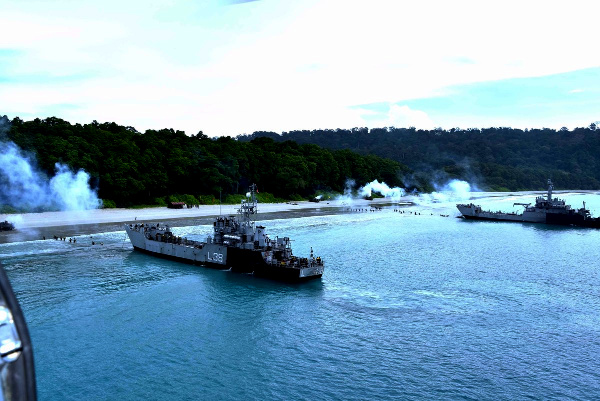A proposal to provide high speed internet to the Andaman and Nicobar Islands in order to augment their communication infrastructure especially during natural disasters through an under-sea optical fibre cable system from Chennai has been cleared by an expert committee of the Ministry of Environment, Forest and Climate Change (MoEF).
The ‘Chennai Andaman Nicobar Island’ (CANI) cable system will have a speed of 100 Gigabit per second and “will be of immense strategic significance to India in addition to assisting the Andaman and Nicobar Islands communications security, especially during natural disasters or failures of other systems”, the Department of Telecoms submitted before the Expert Appraisal Committee (EAC) of the MoEF.
The proposed project is set to provide a fillip to defence communication infrastructure in the islands. At present, telecom connectivity between the mainland and Andaman and Nicobar is through satellites with limited bandwidth capacity.
Eight islands
The project is expected to be implemented at a cost of ₹71.28 crore. The sub-marine cable system will connect the Indian mainland from Chennai with the eight islands of the Union Territory. These are Port Blair, Little Andaman (Hut Ba), Car Nicobar, Kamorta, Great Nicobar (Campbell Bay), Havelock, Long and Rangat.
Under the proposal, the sub-marine cable system will be laid on the sea bed and the total route length will be 2,199.66 km.
The cable will land at the beaches and terminate at the proposed beach manhold (BMH) locations and then taken to the cable landing station (CLS) for distribution.
NIOT’s involvement
“All 8 BMHs and 3 CLS are falling within the Island Coastal Regulation Zone (ICRZ) area as per the survey conducted by Institute of Remote Sensing (IRS), Anna University, Chennai,” the minutes of the EAC meeting read.
Noting that some form of damage to the corals in the region was inevitable along the cable route, the EAC directed the Department to limit the damage by creating adequate safeguards, and carry out additional marine Environmental Impact Assessment study through the National Institute of Ocean Technology (NIOT), Chennai, as part of the Detailed Project Report.
“The Committee observed that, this study is required as abundant precaution in addition to the study report made available. The study should also highlight conservation and restoration measures for corals and associated flora and fauna,” it added.
The committee also directed that NIOT be associated as a third party observer for the project until its completion and provide appropriate advice during its implementation.
Source:TH
Image Courtesy:AmarUjala
You may also like
-
IAF Aircraft Set Course For Exercise Eastern Bridge VII At Oman
-
IAF Set To Host The Indian Defence Aviation Exposition-II At Jodhpur
-
Dot Simplifies Approval Processes For Telecom Licenses And Wireless Equipment
-
Defence Secretary to co-chair 5th India-Philippines Joint Defence Cooperation Committee meeting in Manila
-
Simultaneous Launch Of ‘malpe And Mulki’, Fourth And Fifth Ships Of Asw Swc (Csl) Project
